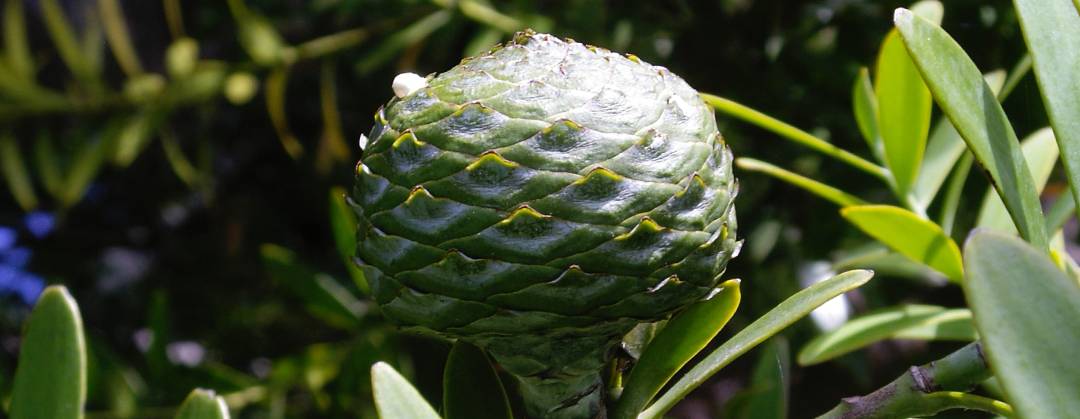Relatively good viability. Uncertainties with sowing to germination time frame and long-term storage. Can be grown from both grafting and tissue culture.
Agathis australis Kauri

This guide is based on a literature review. It compiles information from various sources. Different sources may offer varying advice and findings.
Moderate.
Found in warm temperate areas of the North Island.(1)
Dioecious – can only collect seeds from female plants.(1)
No dormancy.(2)
88% of fresh seeds are viable.(2)
Poorly developed root system, prefers moist fertile soils.(5)
Germination, seed storage, and vegetative propagation need further investigation.
Information about the native seed profiles
All species names are in the following order: scientific name, common name, and Māori name. Names may vary by region. We have tried to use the most common names across New Zealand.
We have sourced photos from different websites and creators. We have used the images under different licences. These include Public Domain and Creative Commons licenses. For Agathis australis, the image details are:
- Photo by (c) Miguel A. Casado – some rights reserved (CC BY-NC)
- Original image
The basis for each seed profile is a literature review carried out by Scion. Te Uru Rākau – New Zealand Forest Service commissioned and worked on the review to produce a native seed catalogue. The full seed catalogue is on the Ministry for Primary Industries (MPI) website.
References
Steward, G A; Beveridge, A E (2012) A review of New Zealand kauri (Agathis australis (D.Don) Lindl.): its ecology, growth and potential for management for timber. New Zealand Journal of Forestry Science. 40, 33–59.
Preest, D (1979) Seed storage of several New Zealand indigenous trees – Kauri (Agathis australis). New Zealand Journal of Forestry Science 9(3), 337–343.
Aitken-Christie, J; Platt, G C (1992) Agathis australis: a new era for kauri propagation. Combined Proceedings of the International Plant Propagators' Society 42, 63–69.
Department of Conservation. Seed collection and propagation guide for native trees and shrubs, Department of Conservation. Accessed 17 October 2024.
Bergin, D; Steward, G (2004) Kauri: establishment, growth, and management. New Zealand Indigenous Tree Bulletin No.2 New Zealand Forest Research Institute Limited. Rotorua, New Zealand.
Wyse, S V; Carlin, T F; Etherington, T R; Faruk, A; Dickie, J B; Bellingham, P J (2024) Can seed banking assist in conserving the highly endemic New Zealand indigenous flora? Pacific Conservation Biology 30, PC23029.
Olsen, M; Millner, J; Ries, T; Douglas, B (2024) Native afforestation: Review of germination. MPI Te Uru Rākau – New Zealand Forest Service Technical Paper No: 2024/03.
Fountain, D W; Outred, H A (1991) Germination requirements of New Zealand native plants: a review. New Zealand Journal of Botany 29(3), 311–316.
Ford, C; Lloyd, A (2023) Germination of native species seed after cold treatment, surface sterilisation and soaking in 1% hydrogen peroxide. MPI Te Uru Rākau - New Zealand Forest Service Technical Paper No 2023/01.
Gough, K; Hargreaves, C; Steward, G; Menzies, M; Low, C; Dungey, H (2012) Micropropagation of kauri (Agathis australis (D.Don.) Lindl.): in vitro stimulation of shoot and root development and the effect of rooting hormone application method. New Zealand Journal of Forestry Science 42, 107–116.
Metcalf, L J (1995) The propagation of New Zealand native plants. Godwit; Auckland, New Zealand.
Horner, I J; Hough, E G (2014) Pathogenicity of four Phytophthora species on kauri: in vitro and glasshouse trials. New Zealand Plant Protection 67, 54-59.
Bowen, M; Whitmore, T (1980) A second look at Agathis. Commonwealth Forestry Institute, University of Oxford, Oxford, England.